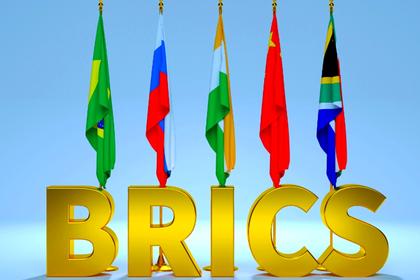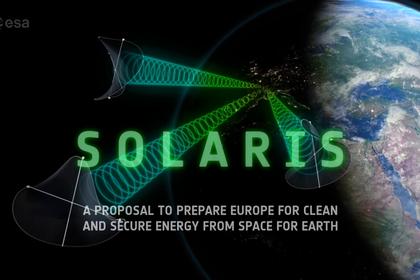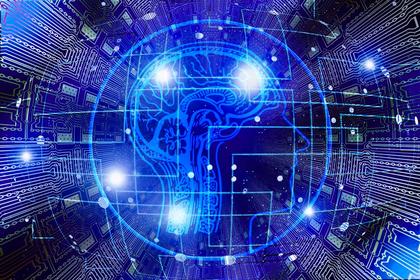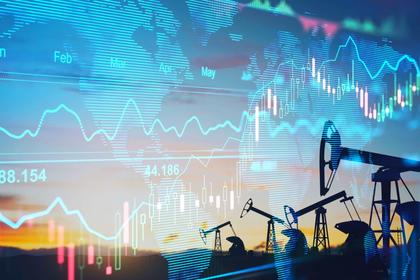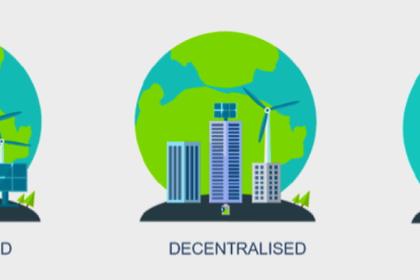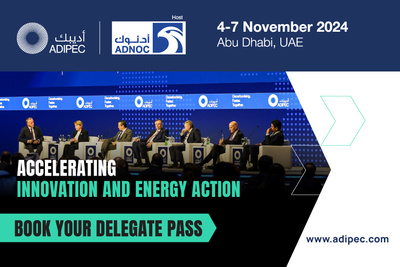
GLOBAL 3D ENERGY TRANSITION
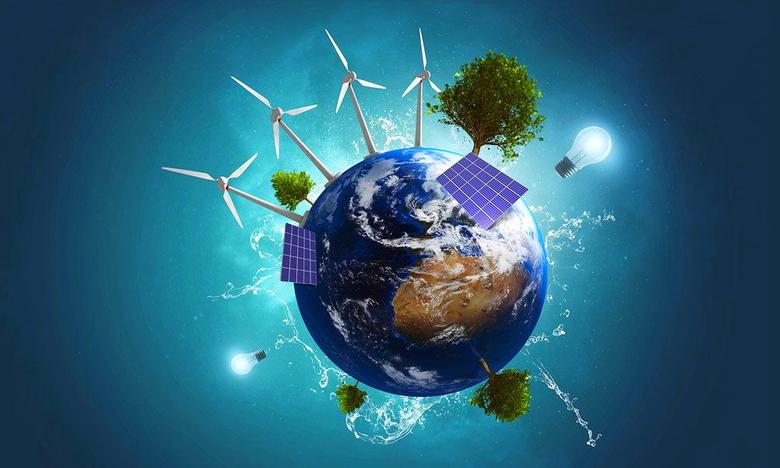
By HUGO STAPPERS Global Sales Leader - Energy Portfolio Management Hitachi Energy
ENERGYCENTRAL - Sep 26, 2022 - When Energy Trading and Risk Management (ETRM) systems were introduced over 20 years ago, the goal was to automate the complex and routine tasks and business processes of energy trading, specifically eliminating manual processes, reducing costly errors, minimizing operational risk and increasing efficiency.
Today, the 3Ds of energy: Decarbonization, Decentralization and Digitalization, are driving the energy transition and the new energy sources and market participants that go along with it. While some of the cutting-edge digital technologies deployed in the past certainly cross the path of ETRM systems, industry surveys tell us that even the original automation goals have not been realized by legacy solutions. Now is the time to consider a modern ETRM solution with core competencies that support the activities around the cleaner energies, including renewables and natural gas.
Decarbonization is synonymous with the energy transition. Last year, for the first time, renewables generated more electricity than fossil fuels in the European Union. By 2050, the U.S. Energy Information Association projects renewables will compose of 42% of electricity generation. Similarly, Japan has set an ambitious target for renewable energy in the nation's electricity mix as it aims to tackle climate change and achieve its 2050 carbon neutral goal.
Over 1,000 companies, holding more than $23 trillion in market capitalization, have set 1.5°C-aligned science-based targets for decarbonization.
We are not only witnessing changes in how electricity is produced and consumed, but also in the way energy is traded. Technology innovation is required to improve operations and enable market redesign and business models from generation, trading to consumption.
Decentralization is a fundamental aspect of the energy transition, Traditionally, vertically integrated utilities generate, supply, and distribute energy from centralized power stations to their customers. Today, this generation is being replaced by distributed renewable energy sources, battery storage and more localized generation at homes and businesses. This pushes the grid to its limits. Demand response programs are being instituted to help provide grid stability, but this introduces increased complexity and data volumes, as well as new responsibilities for electricity providers who now must engage in sophisticated energy contracting and trading transactions to serve their load efficiently, profitably and in a balanced fashion on a near real-time basis.
This is where Digitalization comes in. Digitalization enables decentralization with next generation solutions that bring the tools, automation and analytics necessary to manage the decarbonized energy system of the future .
ETRM systems have a strong role to play in bringing each of the 3Ds to fruition. In order to automate the end-to-end process from deal entry and risk management to settlement, this shift from legacy energy commodities to next generation renewables requires functionality that supports near real-time operations through advanced integration with optimization tools, trading venues, automated trading solutions, market operations, as well digitalization of back office functionality for the management of the growing number of standard and complex power purchase agreements and associated volumes of energy attribute certificates.
Given the speed at which the market operates and the growing amounts of data that needs to be processed, spreadsheet-based and legacy systems relying on delayed data import and end-of-day reporting introduce operational risk, higher cost, and missed opportunities for revenues and profits.
Front Office
It’s difficult to find a market participant that is not exposed to forecasting, short-term markets, power purchase agreements, and green certificates. The deal life-cycle must be supported by highly automated workflows where market prices can be imported, trades can be confirmed through electronic confirmation matching, or can be captured automatically from a trading exchange, such as a power spot market, or from a market operator like ERCOT or PJM.
An ETRM system can be an indispensable front office tool. In the front office, a repository of smart Deal Templates can be set up in the system that are pre-populated for a product trade including necessary pricing or cost formulas, so that only the minimum amount of data needs to be keyed in, such as price and delivery period. Deal templates can also be used behind the scenes to help automating the import of confirmed trades from Exchanges. As a result of the timely entry of deals, a modern ETRM system is capable of immediately processing and recalculating based on the latest data so the traders always have an updated position.
To further address the complexity of intraday trading, algorithmic trading solutions were introduced to handle the required responsiveness of a volatile and high-volume market. A next-generation ETRM system that is ‘live’ offers experienced traders the opportunity to step in and take control in situations where human intervention is needed to navigate unexpected volatile market conditions because algorithmic models fall short.
Mid Office
Consequently, the timely entry of trades and near real-time updating by the ETRM system also benefits the mid-office. Moreover, apart from having live insight into the business, an integrated ETRM system also represents - or otherwise supports - a huge single data repository. This subsequently allows the organization to take advantage of advanced analytics. For example, predictive analytics is the use of (historical) data, statistics/mathematics and machine learning techniques to get insights into the likelihood of specific future scenarios. Consider how using models for price (and load) forecasting, simulations to support asset optimization in a world of renewable resources and short-term trading, can directly improve profits and result in a competitive edge. Additionally, user-configurable What-If scenarios can be created to allow quick analysis of Profit & Loss, Mark-to-Market, and (incremental) Value-at-Risk valuations for predefined situations. In this way, the What-if scenario allows a business to respond to alternative situations more quickly and effectively because they have developed strategies to rely upon.
Nomination
Similarly, leveraging contemporary technologies built into the ETRM system, rule-based algorithms can help to streamline unique and laborious processes, such as nomination. Natural gas is considered to stay around as part of a cleaner energy mix. Moreover, biogas is making advancements and is an easily storable fuel that can be used the same way as natural gas is used without changing any settings on equipment. A next-generation ETRM can automate complex equity gas nominations and the optimization of gas flows to meet demands. It takes a single scheduler to easily view his supply and demand positions by location and run a solver to get the optimized flow, further supported by an embedded gas nomination process.
Back office
The mix of consumer demand, sustainability targets and a desire to cut cost is driving companies to engage into power purchase agreements (PPAs). With an integrated ETRM system, the back-office will also benefits from straight-through-processing and built-in workflow management - streamlining the contract-to-bill process. An ETRM system that has a notion of Billing Determinants and Charges Types, will be able to automate 95% of all contracts, whether ISDA or EFET master agreements, complex PPAs, Intercompany, or Generation and Renewables contracts. As with the Front Office, the ETRM system provides templates and formulas that can be leveraged by the back office. This functionality is also required if one wants a complete P&L report (i.e. do shadow settlement to calculate estimates). Taken together, the savings and efficiency improvement will be substantial (6+ FTEs).
The energy transition cannot be realized without digitalization of systems and processes that provide the flexibility to manage renewables, manage distributed generation and serve customers.
Far too many trading shops are still relying on little armies of deal entry clerks, spreadsheet jockeys, or settlement analysts. Next-generation ETRM systems provide functionality and the automation that allow a company to redirect its staff to get involved in more productive activities while at the same, reduce its cost of trading and be more competitive. A modern integrated ETRM system supports a trade processing framework that reduces manual intervention and minimizes errors while enhancing transparency. New technologies are available to achieve 21st century process automation that leverage advanced analytics to make better decisions, be more competitive and in short, do more with less.
-----
This thought leadership article was originally shared with Energy Central's Digital Utility Community Group. The communities are a place where professionals in the power industry can share, learn and connect in a collaborative environment. Join the Digital Utility Community today and learn from others who work in the industry.
Earlier:


